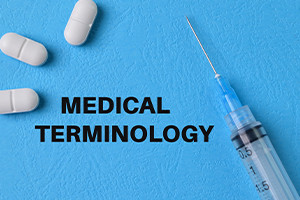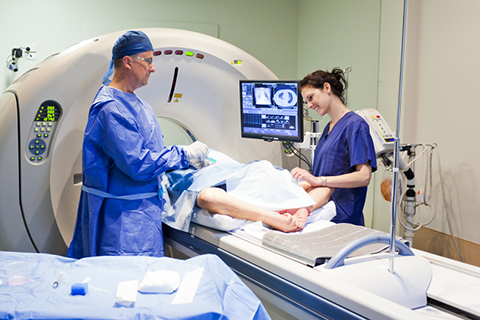Understanding the verbal or written clinical terms and abbreviations commonly used for healthcare communication can be challenging but understanding the basic word structure and definitions of some common word elements makes the meaning of thousands of medical terms clear. ‘Medical terminology’ is the vocabulary used by those who work in the medical field. They use distinct terms to describe the human body, how it works, its disorders and the procedures and treatments used to treat it. Any prospective medical student needs to know the common terminologies used by medical professionals so this course develops your medical fluency and teaches you a language that lets you communicate with doctors, nurses and patients.
We first introduce you to the terms associated with the anatomy, physiology and pathology of the human body and its different parts, using pictures to help you understand and memorise them. You will then learn about the equipment used in a hospital. Medical terminologies consist of ‘stem’ words, prefixes, suffixes, acronyms and abbreviations. We lay out the most common suffixes and prefixes used in medical terminology and explain how to use them to ‘decode’ medical words. We then explore the terms associated with systems of the body such as its central nervous, musculoskeletal and respiratory systems. We also provide terminologies associated with laboratory tests, procedures, therapeutics and more.
This course is ideal for those who want to work in the health and science fields and need to communicate with physicians, nurses, lab technicians and other medical professionals, including support staff like receptionists, medical clerks or patient-care coordinators. On a personal level, understanding medical terminology can explain your own or your loved one's health and facilitates better communication with your doctors and nurses. This course contains illustrated presentations, images and diagrams to help you understand its content. There are no prerequisites for taking the course and our list of acronyms and abbreviations helps you to build a foundation in understanding medical terminology.
What You Will Learn In This Free Course
- Outline the medical terms used for ...
- Describe the eyes and ears using me...
- Identify the equipment found in a m...
- Recognise the names of frequently p...
- Outline the medical terms used for different parts of the human skeletal system
- Describe the eyes and ears using medical vocabulary
- Identify the equipment found in a medical ward
- Recognise the names of frequently performed laboratory tests
- Explain the use of common medical acronyms and abbreviations
- Compare the medical terminologies related to different organ systems
- Recall the names and abbreviations used for diagnostic and therapeutic procedures
View All Learning Outcomes View Less All Alison courses are free to enrol study and complete. To successfully complete this certificate course and become an Alison Graduate, you need to achieve 80% or higher in each course assessment. Once you have completed this certificate course, you have the option to acquire an official certificate, which is a great way to share your achievement with the world.
Your Alison certificate is:
- Ideal for sharing with potential employers
- Great for your CV, professional social media profiles and job applications.
- An indication of your commitment to continuously learn, upskill & achieve high results.
- An incentive for you to continue empowering yourself through lifelong learning.
Alison offers 3 types of certificates for completed certificate courses:
- Digital certificate: a downloadable certificate in PDF format immediately available to you when you complete your purchase.
- certificate: a physical version of your officially branded and security-marked certificate
All certificates are available to purchase through the Alison Shop. For more information on purchasing Alison certificate, please visit our FAQs. If you decide not to purchase your Alison certificate, you can still demonstrate your achievement by sharing your Learner Record or Learner Achievement Verification, both of which are accessible from your Account Settings.


























 CPD Accredited
CPD Accredited
 Knowledge & Skills You Will Learn
Knowledge & Skills You Will Learn
 $54,180
$54,180











.jpg)








